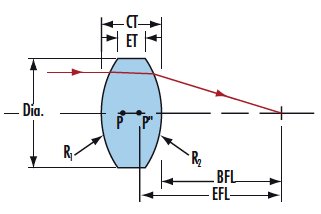First, the process The waste heat of the aldehyde gas is generated by the hydrolysis process of the furfural plant to evaporate the waste water, and the evaporated waste water is condensed, and the condensed water is returned to the boiler for further use or discharged after being treated; the concentrated liquid is decolorized and refined to obtain the finished melted snow CMA. The boiling point of the wastewater under the crude distillation column is above 100 °C. When the sewage is treated by a simple evaporation method, since acetic acid and water have an azeotropic point, water cannot be separated from acetic acid. In order to achieve the purpose of separation of acetic acid and water, acetic acid must first be stabilized in the liquid phase, and then the water is evaporated, and finally calcium magnesium acetate is crystallized to obtain a calcium magnesium acetate product. The stabilizer may be sodium hydroxide, calcium oxyhydroxide, sodium carbonate, and other hydroxides. In order to improve the evaporation efficiency, the scheme adopts a double effect evaporation method. The one-effect evaporator uses the aldehyde vapor generated in the production process to heat the wastewater, that is, the aldehyde gas is cooled according to the process. The heat source for heating is also solved. The two-effect evaporator heats the wastewater by using a gas distilled from a one-effect evaporator. In order to improve work efficiency, the two-effect evaporator is evaporated under reduced pressure. The boiling point of water is 100 ° C, and only organic matter below 100 ° C during evaporation can be evaporated to the vapor phase. Therefore, the composition of the material temperature in the vapor phase is between 99 and 100 oc, which is basically pure distilled water, which fully complies with the boiler water standard and can be returned to the boiler for use as boiler water. The concentrated liquid obtained after evaporation can be decolorized, purified and crystallized to obtain a finished snow melting agent CMA. Second, the effect description Furfural wastewater after 2 evaporations. The results show that the water CODQ is between 70 and 100 w/L. It is below 100 me/L. The experimental results show that the double-effect evaporation process can use the hot aldehyde gas to attract the double-effect evaporation system as a heat source, saving investment. The operating cost is low, and the treated effluent can be directly reused as boiler supplementary water after softening. Thereby achieving low cost and effective treatment of furfural wastewater. Concerned about surprises Label: Study on double-effect evaporation treatment process for furfural wastewater treatment Previous: The specific operation method of electric valve Next: The harmfulness of ammonia gas, hydrogen arsenide gas and ethane thiol gas
A double-convex lens is compose of two convex surfaces, has a positive focal length. Normally Bi-Convex lenses are most suitable where the object and image are on opposite sides of the lens, and are popular for many imaging applications.
Some styles of cylindrical lenses have antireflective coatings to increase the transmission of light through the lens. Fused silica cylinder lenses are ideal for demanding laser machining and medical applications.
We supply kinds of plano-convex
Cylindrical Lens,plano-concave cylindrical lens,bi-convex cylindrical
lens,bi-concave cylindrical lens,meniscus cylindrical lens,Rod
cylindrical lenses,special cylindrical lens etc.Every sizes,materials cylindrical lenses are available according to your detailed parameters.
Double Convex Lens
Specification of our cylinderical lens as follow:
Double Convex Lens,Double-Concave Cylinder Lens,Bi Concave Cylindrical Lens,Optical Glass Double-Convex Cylinder Lens China Star Optics Technology Co.,Ltd. , https://www.opticsrealpoo.com

*Material: BK7,Ge,UV-grade fuse silica(JGS1,JGS2,JGS3)or other optical materials
*Dimension Tolerance: +0.0 -- -0.1mm
*Center Thickness: +/-0.1mm
*Focal Length Tolerance: +/-1%
*Surface Quality:20/10
*Surface Figure: lambda/2 at 633nm on plano side
*Clear Aperture>90%
*Chamfer: 0.25mm at 45 degree typical
*Coating Optional